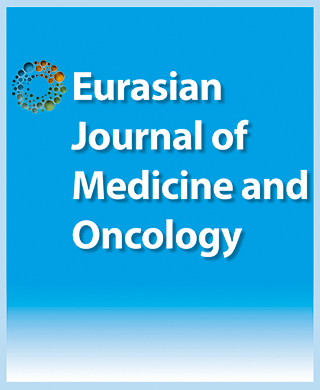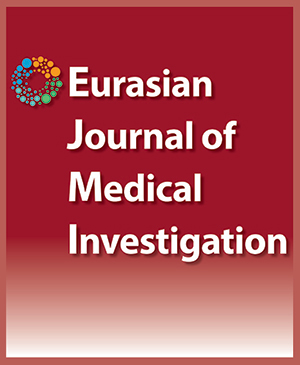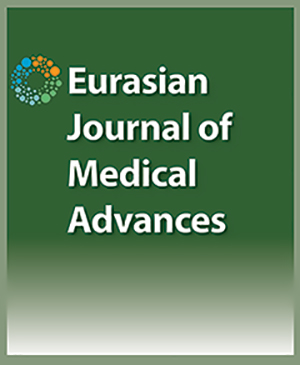

Clinical Significance of Serum 25-Hydroxyvitamin D Levels in Non-Small Cell Lung Cancer
Serkan Degirmencioglu1, Ozgur Tanriverdi2, Esin Oktay3, Esin Avci4, Atike Gokcen Demiray1, Hande Senol5, Burcu Yapar Taskoylu1, Gamze Gokoz Dogu1, Arzu Yaren11Department of Medical Oncology, Pamukkale University Faculty of Medicine, Denizli, Turkey, 2Department of Medical Oncology, Mugla Sitki Kocman University Faculty of Medicine, Mugla, Turkey, 3Department of Medical Oncology, Adnan Menderes University Faculty of Medicine, Aydin, Turkey, 4Department of Biochemistry, Pamukkale University Faculty of Medicine, Denizli, Turkey, 5Department of Medical Biostatistics, Pamukkale University Faculty of Medicine, Denizli, Turkey,
Objectives: Lung cancer is the most common cause of cancer-related deaths worldwide. The use of tobacco and tobacco products is among the leading risk factors with proven association with lung cancer, although various environmental and dietary factors have been also implicated. Vitamin D deficiency has been identified as a poor prognostic factor in advanced stage colon cancer and breast cancer. The aim of the present study was to compare 25-hydroxyvitamin D [25(OH)D] levels between patients with non-small cell lung cancer (NSCLC) at the time of diagnosis and healthy controls and to evaluate the differences in serum 25(OH)D levels across the subgroups and stages of NSCLC. Methods: A total of 462 patients with NSCLC who were followed and treated in three participating centers were compared retrospectively with and age- and sex-matched 462 healthy controls who underwent testing for serum calcium, lactate dehydrogenase (LDH), magnesium, phosphorus, creatinine, and vitamin D levels in the between January 2016 and June 2018. The patients with NSCLC were further classified according to the histological subtype. Results: The mean age was 63.46±8.86 years. The patient group was composed of 58 females (12.6%) and 404 males (87.4%). Serum 25(OH)D, calcium, LDH, and magnesium levels were significantly different between the patient and the control group (p=0.0001, p=0.0001, p=0.0001, p=0.0001, respectively). Among patients with NSCLC, serum 25(OH) D was significantly lower in patients with adenocarcinoma subtype than in patients with squamous-cell carcinoma subtype (p=0.001). There was a significant correlation between advanced stage with decreased serum 25(OH)D and increased LDH levels (p=0.0001, p=0.0001, respectively). Conclusion: The study is the most extensive study in our region in terms of the number of participating patients. Demonstration of a difference in serum 25(OH)D levels between histological subtypes also contributes to the literature. Keywords: Adenocarcinoma, lung cancer, squamous carcinoma; vitamin D
Cite This Article
Degirmencioglu S, Tanriverdi O, Oktay E, Avci E, Demiray A, Senol H, et al. Clinical Significance of Serum 25-Hydroxyvitamin D Levels in Non-Small Cell Lung Cancer. EJMO. 2019; 3(2): 139-143
Corresponding Author: Serkan Degirmencioglu



